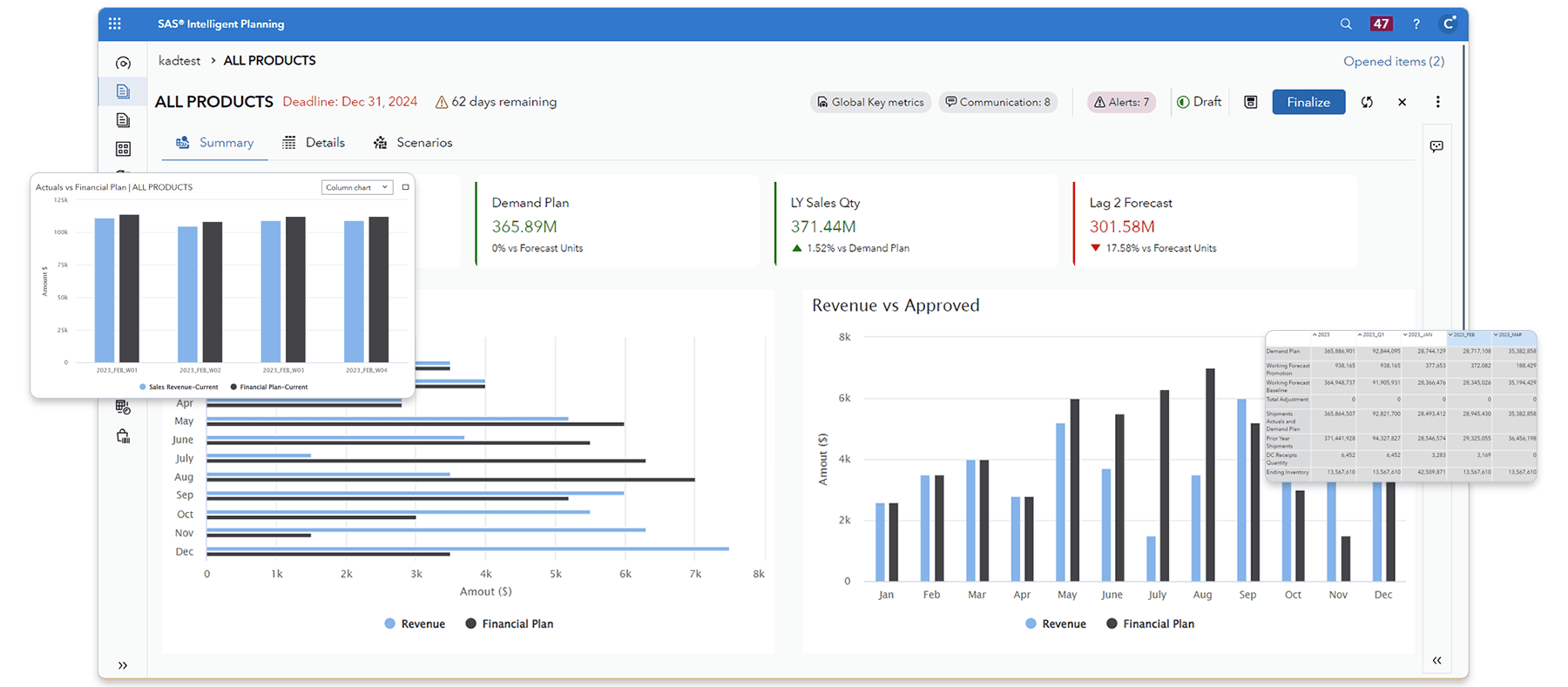Data visualization is a critical way for anyone to turn endless rows of data into easy-to-understand results through dynamic and understandable visuals. Whether your favorite visualization is a pie chart, a geographic map or based on natural language, showing the insights that empower you to make informed decisions is a better way to do data-driven business.
Using augmented analytics and embedded insights, anyone can become a citizen data scientist, regardless of their advanced analytics expertise.
Analyst firms say that SAS has market-leading data visualization, helping users across the globe find insights in their data using new and exciting trends in data visualization.
Here are some ways you can get the most out of your data visualization:
Explore Using Augmented Analytics – the intersection of Analytics and Business Intelligence
In the past couple of years, trends have shifted from the analyst persona taking center stage in all things Analytics and Business Intelligence to empowering the decision-maker to have a closer relationship with the data and the insights drawn from it, and act based on that insight generation. A 2022 BARC survey with over 200 participating companies across the globe, indicates “self-service to edit or author report and dashboards” as the technical feature that has contributed most to the adoption and usage of BI/Analytics tools within organizations.
Analytics and BI need to have a 360-degree approach, which allows organizations to establish a range of BI self-service modes and enables all departments to move in concert. Business users can access relevant insights quickly without turning IT or analytics departments into bottlenecks, and analysts can take advantage of business acumen to direct their analysis while focusing on advanced modeling and automation. By having all users take part in the analytical flow, companies can ensure relevant and accurate information reaches decision-makers timely and effectively.
Anyone can take advantage of self-service Business Intelligence. Are you a data storyteller, analytical explorer or insights consumer?
- Data storytellers – are exacting insights from big data and sharing them with thousands of viewers, who need to see information displayed in intuitive and interactive visualizations. Because users need to quickly gain a comprehensive understanding of opportunities and challenges hidden in the data sets, report builders are now becoming data-driven storytellers. Report builders can directly take advantage of automated analytics capabilities. They can show, with the most compelling reporting, the impact of any KPIs organizations are tracking
- Analytical explorers – during the analytics process, take advantage of augmented SAS Visual Analytics capabilities like automated predictions and automated explanation (with variable characteristics and importance analysis, anomaly analysis, model summary generation) in an easy-to-understand natural language format. While this user can decide to work on improving their analytical models, SAS Visual Analytics supports them with model autotuning and offers a low-code environment for model development and building composite AI solutions. Furthermore, data loaded for reporting is scanned and suggestions are made on which charts would most effectively display information in a report. All this assists analytical explorers in promoting analytical insights to consumer reports in a highly efficient manner, reducing the time to value for decision-makers.
- Insights consumers – allow users ranging from novice to expert to approach reports through different viewer customization levels that can be set up by the report designer: simple edits, comprehensive edits and data edits.
Dive in with Embedded Insights
Self-service accelerates real time to insights and embedding those insights into existing web applications keeps users engaged. It is no surprise that this topic’s popularity is on the rise in the ABI world and across industries. The last few years have brought disruption, causing not only a need to receive alerts and predict outcomes ahead of the curve, but also to make those available to thousands and sometimes millions of users,. Resiliency to disruption is necessary to gain trust and keep information at the forefront. As Jenn Chase, CMO of SAS, explains “Ongoing war, changing consumer expectations, rapidly advancing technology changes to the workforce, and evolving legislation are all confronting business leaders today.” Embedding enables companies to confidently approach an external deployment model, for the kind of information that can be shared with the wider public. We cannot deny, it also has to do with the need to avoid “application fatigue” and simply a desire to have “information at our fingertips”, within our daily workflow.
Always Share Insights
There is an urgency in sharing data, so much so that Gartner calls it imperative unless there is a “well-vetted reason not to” in their report Top Trends in Data and Analytics, 2022. I will go as far as saying the same about actionable insights. It makes sense if we think of the disruptions in most verticals produced by the global COVID pandemic. There has been a need to switch gears many times due to supply chain interruptions, employment fluctuation and healthcare considerations. In these scenarios, keeping all stakeholders informed and involved in the next steps is paramount.
SAS makes it easy to share high-impact analytical insights directly from your Outlook inbox, with SAS for Microsoft Outlook 365. Users can enable the Microsoft Apps Add-in to explore and interact with SAS Visual Analytics reports, within a canvas attached to the email editing pane, allowing data to truly support the message to their stakeholders. Additionally, any visualization object can be included in the email with the click of a button, improving user experiences.
Special mention: Governance
We cannot address the topic of self-service without addressing some of the cautions that come with it. The main one is governance. Namely, how do organizations make sure that users who are now enabled to create their own reports are accessing the same source of truth are not generating insight silos, that are using correct and high-quality data?
SAS Viya delivers a comprehensive and centralized solution, helping track data lineage throughout the entire analytical lifecycle.
Incorporating these three trends into your data visualization strategy is a great way to empower any kind of user, not just expert data scientists, to make better data-based decisions. Anyone can bring value to their organization, regardless of their level of analytics expertise, with data visualization! Utilizing data science, augmented analytics, machine learning and natural language, any user can solve business problems.
SAS Viya is made for the whole team, allowing for advanced business intelligence and democratization amongst many different roles. SAS has added embedding capabilities for intuitive navigation of SAS Viya folder structures and report recommendations, natural language explanation and PDF export capabilities to the Viya platform. Whether you're a data scientist, business analyst, statistician or forecaster, you'll discover the real power of SAS to explore, analyze and visualize data.






